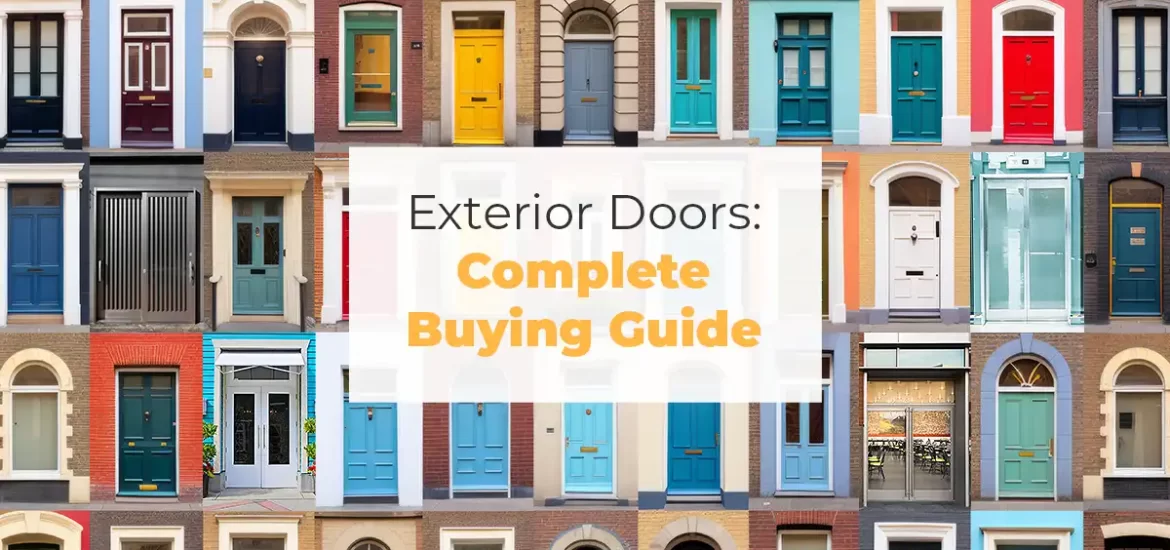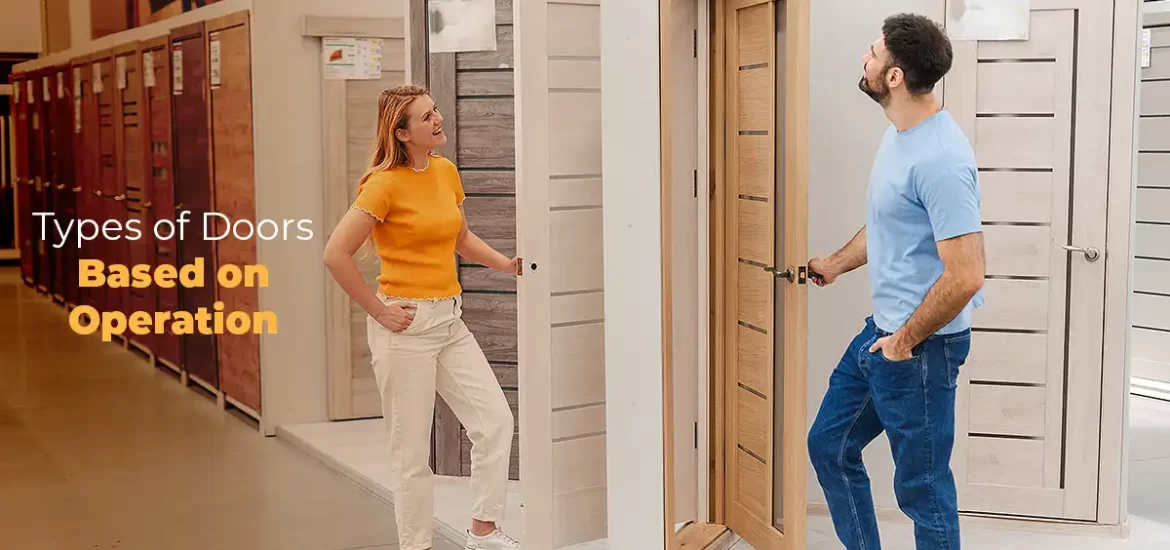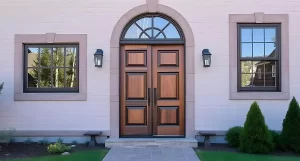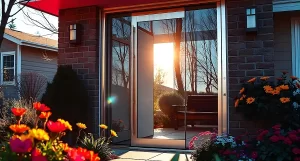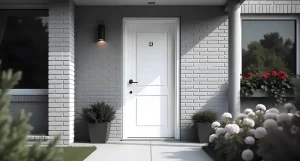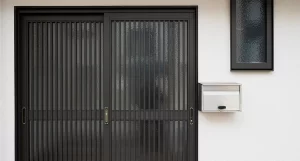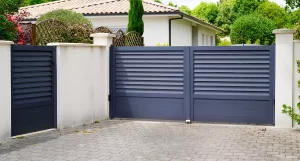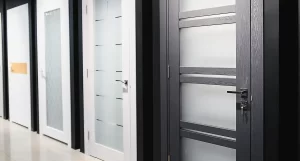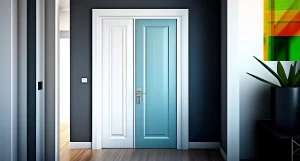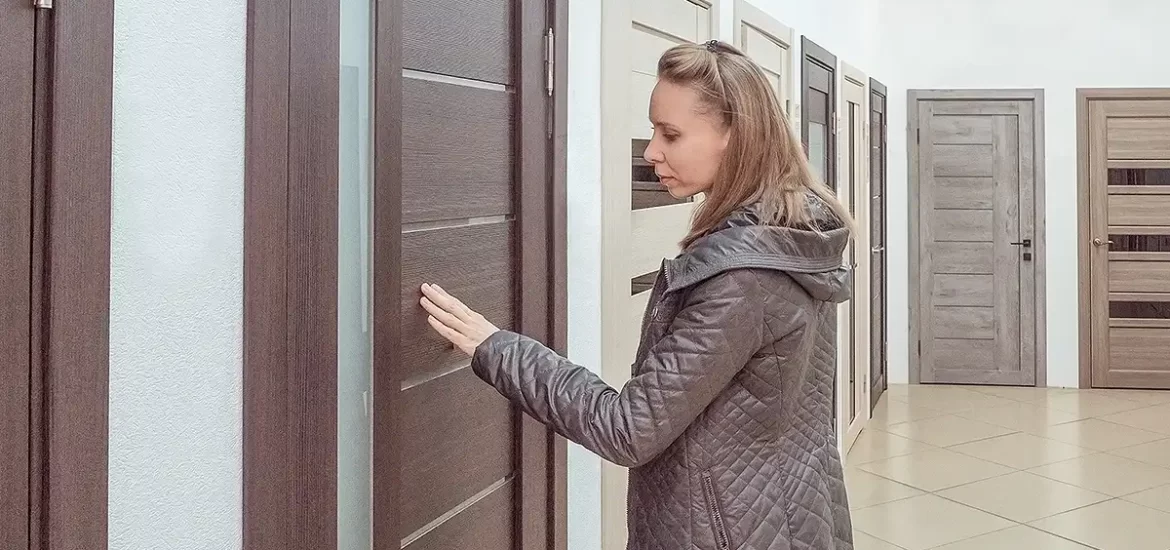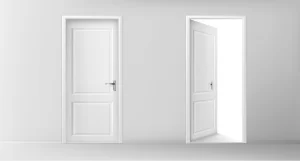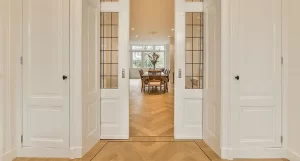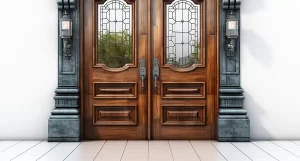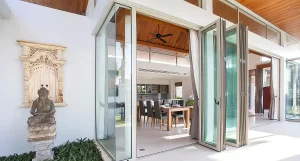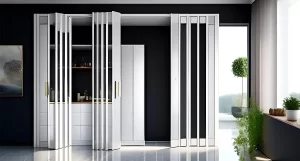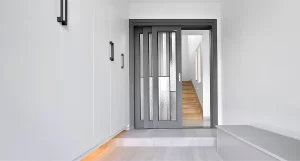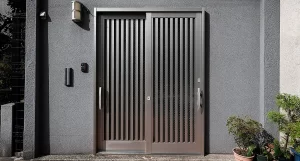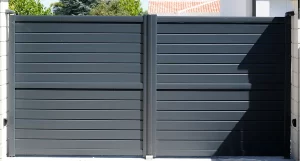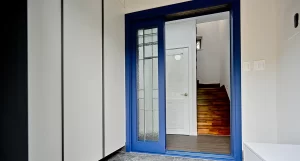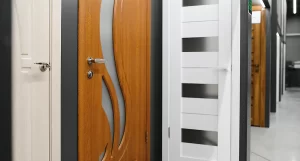When selecting exterior doors for commercial projects, renovation jobs, or bulk purchasing needs, it’s essential to recognize that not all doors are built alike. Factors such as materials, construction techniques, and design elements significantly impact security, energy efficiency, aesthetics, and durability.
This comprehensive guide is designed to help professionals, contractors, and bulk buyers navigate the complexities of choosing and maintaining high-quality exterior doors. Understanding the diverse options available will empower you to make informed purchasing decisions that meet your project requirements and adhere to compliance standards.
Types of Exterior Doors
Exterior doors are available in various configurations, each suited for specific functional and design needs. Identifying the right door for your entry points ensures optimal performance and visual harmony with the building’s architecture.
1. Front Entry Doors
The front door is the centerpiece of a building’s security and aesthetic appeal. A carefully chosen front entry door not only enhances curb appeal but also delivers strong security and energy efficiency. Opt for designs with insulated cores, reinforced frames, and premium locking mechanisms to ensure safety while maintaining interior comfort.
2. Secondary and Back Entry Doors:
Secondary doors, such as side or back entry points, are often chosen for practicality and ease of access. While they may not carry the visual weight of front doors, these entryways still require durability, weather resistance, and secure locking mechanisms. Whether you’re choosing an exterior door with a frame or a solid steel design, ensure it aligns with the building’s overall style and functionality.
3. Patio and French Doors:
Patio and French exterior doors with glass seamlessly connect indoor and outdoor spaces. Featuring large glass panes, these doors invite natural light, improve ventilation, and provide access to courtyards or decks. Look for energy-efficient glazing, thermally insulated frames, and robust weatherproofing to balance openness with security and performance.
4. Dutch Doors:
With their split design, Dutch exterior doors offer flexibility for ventilation and visibility. They’re ideal for settings requiring partial enclosure with added functionality. Modern Dutch exterior doors are available in diverse materials and finishes to match traditional and contemporary architectural designs.
5. Sliding Doors:
Sliding exterior doors with glass are a space-saving solution, ideal for areas with limited swing clearance. They provide expansive views and smooth access to outdoor spaces. High-quality sliding exterior doors come equipped with energy-efficient glass, reinforced frames, and durable tracks for long-lasting functionality and security.
Materials and Construction
The material composition of an exterior door plays a pivotal role in its performance, maintenance, and longevity. Factors like project’s location, climate, and intended use should guide the choice of materials to ensure the door meets both functional and aesthetic needs.
1. Wood Doors:
Wooden exterior doors offer timeless warmth and character, making them a popular choice for both residential and commercial projects. Solid hardwoods like mahogany or oak are prized for their durability, while engineered wood cores enhance stability and resist warping. Proper sealing, painting, or staining ensures long-term weather resistance and aesthetic appeal. Whether you’re designing traditional homes or contemporary spaces, wood is a classic, customizable material that pairs seamlessly with diverse architectural styles.
2. Steel Doors:
Known for their exceptional strength and security, steel exterior doors are ideal for high-traffic or commercial settings. They often feature energy-efficient foam cores and reinforced frames to maintain interior temperatures. Resistant to cracking and warping, steel doors offer a reliable, low-maintenance option. Available in smooth finishes with a range of color coatings, they provide enhanced curb appeal while meeting demanding security requirements.
3. Fiberglass Doors:
Combining durability, energy efficiency, and low maintenance, fiberglass exterior doors are a versatile option for both residential and commercial applications. These doors resist dents, scratches, and extreme weather conditions, making them perfect for harsh climates. Many fiberglass designs replicate the look of wood grain, delivering a premium aesthetic without the upkeep. Their energy-efficient properties also contribute to lower heating and cooling costs, making them an environmentally conscious choice.
4. Aluminum and Glass Doors:
Aluminum and glass exterior doors exude a modern, minimalist appeal. With thermally improved frames and insulated glazing, they balance energy efficiency with an abundance of natural light. These doors are often selected for commercial buildings or sleek, contemporary residences. Their streamlined appearance enhances open spaces while maintaining functional performance.
5. Composite Materials:
Composite exterior doors offer a balanced combination of durability, insulation, and aesthetic variety. By blending materials like wood fiber, PVC, and fiberglass, these doors resist moisture, rot, and pests, ensuring long-lasting performance. Composite doors are an excellent choice for projects requiring versatile designs that complement diverse architectural styles, all while minimizing maintenance.
Door Configurations
The configuration of an exterior door impacts installation complexity, customization opportunities, and overall project efficiency. Understanding these options helps streamline both new construction and renovation projects.
1. Pre-Hung Doors:
Pre-hung exterior doors are sold as a complete unit, including a pre-installed frame, hinges, weather-stripping, and often thresholds. This ready-to-install option simplifies the process, ensuring a proper seal and minimizing measurement errors. Ideal for large-scale renovations or new builds, pre-hung doors save time and maintain consistency, especially in bulk installations.
2. Slab Doors:
A slab exterior door consists solely of the door panel without any pre-installed frame or hardware. While installation requires careful measurements and skill, slab doors offer unmatched customization in design, finish, and hardware. Slab doors are ideal for renovations, historical restorations, or where only the door panel needs replacement.
Energy Efficiency and Insulation
In today’s energy-conscious environment, choosing an exterior door that supports thermal efficiency can have a significant impact on utility costs and occupant comfort.
1. Understanding R-Values and U-Factors:
R-Values and U-Factors are critical metrics when evaluating an exterior door’s energy performance. A higher R-Value indicates better insulation, while a lower U-Factor means reduced heat loss. Choosing doors with optimal ratings ensures better energy savings and compliance with green building standards.
2. Weather-stripping and Seals:
Quality weather-stripping and seals are essential for energy-efficient exterior doors. These components prevent drafts, moisture infiltration, and heat loss by maintaining a tight perimeter seal. Look for doors equipped with durable, energy-rated weather seals that stand the test of time.
3. Glazing Options:
For exterior doors with glass inserts, glazing plays a crucial role in energy efficiency. Double- or triple-pane glass, low-E coatings, and inert gas fills improve insulation while reducing UV damage to interiors. These features help maintain comfortable indoor temperatures, making them ideal for energy-conscious projects.
Security Features
When selecting exterior doors, security is often a top priority, particularly for commercial facilities or high-value residential projects. High-quality doors with advanced features help safeguard properties effectively.
1. Locking Mechanisms:
Advanced locking systems, including multi-point locks, heavy-duty deadbolts, or smart locks, provide enhanced protection for exterior doors. Choose hardware tested against forced-entry standards to ensure maximum security for both residential and commercial applications.
2. Reinforcement Options:
Reinforcing the door frame with steel plates, strike reinforcers, or heavy-duty hardware can prevent break-ins. Additionally, robust hinges with non-removable pins increase the durability and tamper resistance of exterior doors in high-risk areas.
3. Compliance with Safety Standards:
Ensure the selected exterior door complies with local building codes, fire safety requirements, and security regulations. Look for certifications that confirm the door’s quality, such as forced-entry resistance and fire safety ratings, to meet stringent project specifications.
Design and Aesthetics
The design and appearance of entry doors contribute significantly to a building’s value, curb appeal, and architectural harmony.
1. Style Compatibility
Select doors that align with the architectural theme, whether it’s Colonial, Craftsman, Modern, or Industrial. A well-chosen exterior door with glass can add elegance and enhance natural lighting while maintaining compatibility with the building’s style.
2. Color and Finish Options
Exterior doors are available in a variety of finishes, from factory-applied coatings to custom paint or stain options. Choose finishes designed to resist fading, peeling, or chipping to maintain their fresh appearance over time. A bold-colored or textured exterior door with frame can make a statement while ensuring durability.
3. Hardware Selection
Door hardware, including handles, knobs, kick plates, and hinges, adds both functionality and flair. Opt for rust-resistant hardware that complements the door’s style and finish. Durable, aesthetically pleasing hardware enhances the overall impression while maintaining consistent design elements.
Installation Considerations
Proper installation is key to unlocking the full potential of even the best exterior doors, ensuring optimal performance and durability.
1. Professional Installation vs. DIY
While DIY installation can be an option for straightforward projects, hiring professional door installers ensures precise measurements, proper alignment, and adherence to building codes. For commercial projects or wholesale orders of exterior doors, professional expertise helps maintain warranties and achieve consistent results.
2. Measurement Guidelines
Accurate measurements of rough openings, door frames, and thresholds are essential to avoid air leaks, water infiltration, and operational challenges. For bulk projects, meticulous measurements help streamline installation, ensuring each exterior door with frame fits perfectly.
3. Common Installation Challenges
Issues like unlevel floors, irregular framing, or structural inconsistencies can complicate the process. Address these challenges proactively to ensure the smooth operation and longevity of exterior doors across all entry points.
Maintenance and Longevity
Routine care is crucial to extend the service life of your exterior doors while preserving their appearance and functionality.
1. Routine Maintenance Practices
Regularly clean door surfaces, lubricate hinges, and inspect weather stripping to prevent wear and maintain performance. A well-maintained exterior door not only enhances curb appeal but also ensures proper insulation and security.
2. Material-Specific Care
Different materials require tailored maintenance. Wooden doors may need periodic sealing or refinishing, while steel and fiberglass doors benefit from occasional cleaning and protective coatings. Follow the manufacturer’s care recommendations for each type of exterior door to ensure lasting durability.
3. Identifying Signs of Wear and Damage
Watch for signs like rust, peeling paint, warping, or compromised seals. Timely repairs or replacements prevent further damage, preserving the energy efficiency and structural integrity of your exterior doors.
Buying Exterior Doors in Bulk
Purchasing exterior doors in wholesale for commercial, institutional, or large residential projects requires careful planning and consideration to ensure quality, value, and efficiency.
1. Supplier Evaluation
Partner with trusted door manufacturers and distributors known for high-quality exterior doors, robust warranties, and dependable customer service. Request product samples, review certifications, and read industry feedback to ensure the doors supplier meets your standards for bulk orders. For specialized options like exterior doors with glass, verify their energy efficiency and durability.
2. Cost Analysis
While bulk discounts are appealing, prioritize long-term value over short-term savings. Assess the lifecycle costs of the exterior doors—including purchase, installation, maintenance, and replacements—when making decisions. Opting for durable, energy-efficient options like exterior doors with frames can deliver better returns through reduced maintenance and energy savings.
3. Logistics and Storage
Proper storage and handling are critical to maintaining the integrity of exterior doors before installation. Store doors in a dry, temperature-controlled environment to prevent issues like warping, moisture damage, or finish deterioration. This ensures that each door arrives at the installation site in optimal condition.
Regulatory and Compliance Issues
Ensuring your exterior doors meet safety, accessibility, and regulatory standards is vital for professional integrity and project success.
1. Building Codes and Standards
Confirm that your selected exterior doors comply with local building codes, including wind load specifications, hurricane ratings (if applicable), and fire safety standards. Adherence to these regulations enhances occupant safety, prevents penalties, and reinforces your reputation as a reliable contractor or supplier.
2. Accessibility Requirements
Ensure that doors are ADA-compliant and align with universal design principles. Features like wider frames, low-threshold designs, and user-friendly hardware contribute to inclusivity, making the building accessible to all occupants. For options like exterior doors with glass, consider tempered or impact-resistant glass to maintain both safety and accessibility.
Conclusion
Choosing the right exterior doors requires a comprehensive strategy that integrates aesthetics, functionality, security, and compliance. By focusing on factors such as material selection, insulation, installation quality, and long-term maintenance, professionals and bulk buyers can make informed decisions. Partnering with reputable doors supplier like AORBIS Inc. can ensure adherence to regulatory standards will result in durable, efficient, and visually appealing doors. Ultimately, well-chosen exterior doors elevate a building’s performance, safety, and value while delivering long-term satisfaction for both clients and occupants.
